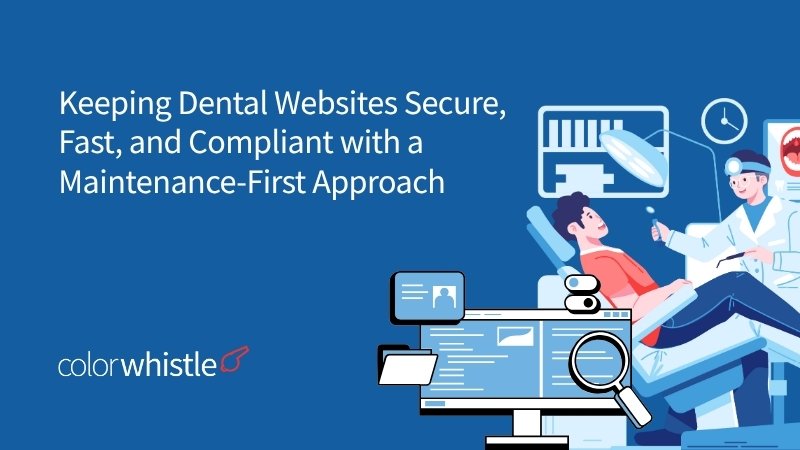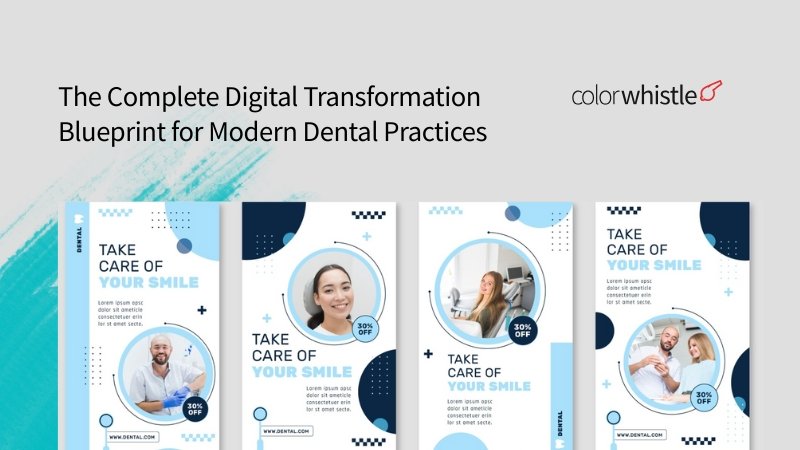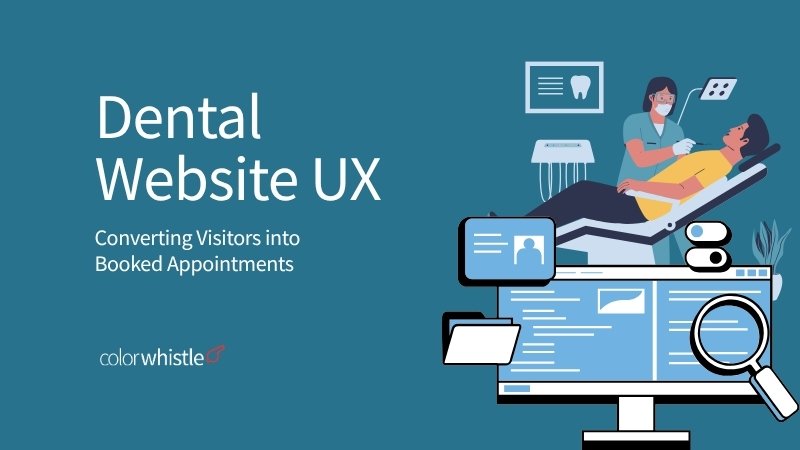Modern dental practices face an increasingly complex digital landscape where their website serves as both the front door to patient acquisition and a critical operational hub. The traditional approach of “build and forget” no longer suffices in an environment where dental website security, regulatory requirements, and patient expectations are constantly evolving. A maintenance-first approach in dental website development recognizes that launching a website represents the beginning of an ongoing commitment rather than a completed project.
The stakes for dental practices extend beyond simple aesthetics or functionality. Patient data protection under HIPAA compliance website standards carries legal and financial consequences, while website performance directly influences patient trust and conversion rates. A single security breach can compromise sensitive health information, damage reputation, and result in substantial penalties. Slow-loading pages drive potential patients to competitors, and outdated content undermines professional credibility.
Dental IT teams and practice owners grapple with multifaceted challenges:
- Balancing patient-facing features with stringent security protocols
- Managing technical updates while maintaining operational continuity
- Scaling infrastructure as practices expand to multiple locations
- Ensuring accessibility compliance alongside HIPAA requirements
- Monitoring uptime and performance across patient portals
The maintenance-first approach addresses these challenges by embedding continuous improvement, security vigilance, and compliance monitoring into the website’s operational framework from day one. This proactive methodology transforms website management from a reactive burden into a strategic asset that supports practice growth and patient care excellence.
Moreover, leveraging advanced technologies such as React.js, dental practices can create more resilient and business-specific web solutions. These developments not only enhance user experience but also align with the ongoing need for security and compliance.
In addition to technical improvements, embracing effective digital marketing strategies is crucial. For instance, adopting digital education marketing services can significantly improve online visibility and patient engagement. This includes utilizing innovative education ads design ideas, which can serve as effective tools in reaching out to potential patients.
The Maintenance-First Approach: Ensuring Ongoing Support and Updates for Dental Websites
A maintenance-first strategy represents a fundamental shift from viewing websites as static digital assets to treating them as dynamic platforms requiring continuous care. In the context of dental practices, this approach prioritizes ongoing support for dental sites through systematic monitoring, regular updates, and proactive problem-solving rather than reactive fixes after issues emerge.
Why Dental Websites Need Continuous Care
The significance of this methodology becomes apparent when considering the unique demands placed on dental websites. These platforms must simultaneously serve as marketing tools, patient education resources, appointment scheduling systems, and secure communication channels. Each function requires different technical components that need regular attention to maintain optimal performance.
How Continuous Updates Impact Website Reliability
Continuous updates and support directly impact website reliability in several measurable ways:
Security patches: close vulnerabilities before they can be exploited by malicious actors
Performance optimizations: prevent gradual degradation of load times and responsiveness
Content freshness: ensures patients have access to current information about services, providers, and office policies
Compatibility maintenance: keeps websites functional across evolving browsers and devices
The Role of Specialized Content Management Systems in Dental Website Maintenance
Specialized Content Management Systems designed for healthcare providers play a central role in effective dental website maintenance. These platforms differ from generic CMS solutions by incorporating features specifically tailored to dental practice needs. Built-in compliance frameworks simplify HIPAA adherence, while structured content templates ensure consistency across provider profiles and service descriptions.
Efficiency Gains from Healthcare-Specific CMS Platforms
The efficiency gains from healthcare-specific CMS platforms extend beyond basic content editing. Automated workflows can trigger necessary updates when regulatory requirements change, while centralized dashboards provide IT teams with clear visibility into maintenance tasks requiring attention. For multi-location practices, these systems enable standardized branding and messaging while allowing individual offices to customize location-specific details.
Enhancing Marketing Functionality through User-Generated Content
Incorporating user-generated content in video marketing, such as patient testimonials or educational videos created by patients themselves, can enhance the website’s functionality as a marketing tool. This type of content not only boosts credibility but also engages potential patients more effectively.
Predictable CMS Updates to Prevent Security Gaps
Additionally, CMS updates for dental practices must occur on predictable schedules to prevent security gaps. Delaying platform updates creates cumulative technical debt that becomes increasingly difficult to resolve, potentially requiring complete website rebuilds rather than incremental improvements.
Streamlining Maintenance Processes with CRM Automation
Implementing CRM automation with AI workflows can streamline this process significantly. By automating routine tasks and providing smart workflow solutions, AI-driven CRM systems like GoHighLevel can help dental practices manage their customer relationships more efficiently while keeping their websites updated and secure.
Prioritizing Security Measures: HIPAA Compliance and Cybersecurity Best Practices for Dental Websites
Protecting patient data is a must for dental practices with an online presence. The Health Insurance Portability and Accountability Act (HIPAA) sets strict rules on how dental websites should handle protected health information (PHI). If a dental website collects, stores, or sends patient information, like appointment requests, contact forms, or patient portals, it must follow HIPAA regulations and take necessary security measures.
HIPAA Compliance Requirements for Dental Websites
To comply with HIPAA, dental websites need to implement several important technical measures:
- End-to-End Encryption: All patient-facing forms must use end-to-end encryption to secure sensitive data during transmission. This includes appointment booking forms that collect names, phone numbers, and treatment inquiries.
- HIPAA-Compliant Hosting: The hosting environment of the website must also be compliant with HIPAA standards. This means choosing hosting providers who offer Business Associate Agreements (BAAs) and have infrastructure designed to meet regulatory requirements such as physical security measures, network segmentation, and access controls.
- SSL/TLS Certificates: As a basic requirement, dental websites should have SSL/TLS certificates installed. This ensures that all data exchanges between patients and servers happen over secure HTTPS connections.
- Multi-Factor Authentication: Patient portals should implement multi-factor authentication to add an extra layer of security when individuals access their test results, treatment plans, and billing information.
- Session Timeout Protocols: To prevent unauthorized access, session timeout protocols should be in place for patient portals so that if a user leaves the portal inactive for a certain period of time, they will be automatically logged out.
The Importance of Regular Security Audits
In addition to these compliance measures, regular security audits are crucial for identifying vulnerabilities before attackers can exploit them. These assessments should focus on examining various aspects of the website’s security:
- Authentication mechanisms and password policies
- Database security configurations
- Third-party plugin vulnerabilities
- Server-side security settings
- API endpoint protections
Vulnerability assessments should be conducted at least once every three months, while penetration testing, simulating real-world attack scenarios, should occur annually.
Cybersecurity Best Practices for Dental Practices
Apart from compliance requirements and regular audits, dental practices should also follow cybersecurity best practices:
- Maintain a rigorous update schedule for all website components: Content Management Systems (CMS) and their associated plugins often release security patches to fix newly discovered vulnerabilities. It’s essential to keep these components up-to-date as even one outdated plugin can give attackers an entry point into the entire website infrastructure.
- Implement automated monitoring systems: Set up systems that can alert IT teams about available updates so that they can promptly apply them.
- Use staging environments for testing patches: Before deploying any security improvements directly onto production sites (where patients interact), it’s wise to test those patches in staging environments first to ensure they don’t unintentionally disrupt patient-facing functionality.
Exploring Advanced Technologies
In addition to these measures, dental practices can also consider exploring advanced technologies like the Metaverse in K-12 education as part of their online platforms. This could potentially enhance patient engagement by offering immersive virtual environments while still complying with HIPAA regulations.
Understanding Staffing Dynamics
Furthermore, given the evolving nature of staffing in the digital age, it may be beneficial for dental practices to understand the differences between remote staffing vs outsourcing. This knowledge can help them make informed decisions regarding project needs related to their online operations.
Staying Updated on Mobile App Development Trends
Lastly, as more patients turn towards mobile platforms for their healthcare needs, it becomes imperative for dental practices to stay updated on the latest trends in Android and iOS app development. By doing so, they can create user-friendly applications that cater specifically to their patients’ preferences and requirements.
By prioritizing HIPAA compliance through technical implementations such as end-to-end encryption and secure hosting solutions, while also adopting proactive cybersecurity measures like regular audits and component updates, dental websites can establish a robust defense against potential threats while ensuring confidentiality remains intact throughout all interactions involving protected health information (PHI).
Enhancing Patient Engagement through Optimized Website Speed and Performance
Website speed optimization is crucial for dental practices competing in an increasingly digital healthcare world. Research shows that users leave websites that take longer than three seconds to load, and for every additional second of delay, conversion rates drop by about 7%. For dental practices, this means lost appointment bookings, fewer patient inquiries, and weaker positioning in local search results.
Search engines prioritize fast-loading websites in their rankings because they know that page speed directly affects user satisfaction. Google’s Core Web Vitals, measuring loading performance, interactivity, and visual stability, are now important ranking factors. Dental websites optimized for speed will rank higher in search results, making them more visible to potential patients looking for dental services. This creates a cycle where technical improvements lead to better user experiences and more organic traffic.
Website Speed Optimization Techniques for Dental Sites
Here are some techniques dental practices can use to optimize their website speed:
Content Delivery Networks (CDNs): CDNs distribute website assets across servers located in different geographic areas. This ensures that patients access content from the server closest to them, reducing latency and speeding up page load times.
Optimized coding practices: Implementing coding techniques such as image compression (using formats like WebP or AVIF), minification of CSS, JavaScript, and HTML files, lazy loading of off-screen images and videos, browser caching for frequently accessed resources, and database query optimization can significantly improve website performance.
Mobile-First Design Principles: With over 60% of healthcare-related searches happening on mobile devices, dental practices need to prioritize mobile-first design principles. This includes optimizing data transfer efficiency, creating touch-friendly interface elements, and using responsive design frameworks that adapt to different device sizes.
Ensuring High Uptime Reliability: A Key Factor in Building Trust with Patients Online
Maintaining a reliable online presence is crucial for building trust with patients. When patients encounter unavailable websites during emergencies, such as severe toothaches or broken crowns, they immediately look for other providers. Each minute of downtime can result in lost patients and revenue.
To establish reliability standards expected from professional healthcare providers, dental practices should aim for 99.98% uptime (less than 10 minutes of downtime monthly). Here are some measures they can take:
- Implement comprehensive uptime monitoring systems that detect issues before they escalate into full outages.
- Use real-time alerting to notify technical teams about performance degradation or service interruptions.
- Set up automated failover systems to redirect traffic to backup servers during primary server problems.
- Monitor performance thresholds to identify gradual slowdowns before they impact user experience.
- Conduct geographic monitoring to test website availability from multiple locations around the world.
Patient portals that handle appointment scheduling, treatment history access, and secure messaging require particularly strict uptime standards. Patients accessing these systems outside traditional business hours, early mornings, evenings, and weekends depend on consistent availability. By implementing robust uptime monitoring practices, dental practices can demonstrate operational excellence and build trust with their patients online.
Navigating Regulatory Compliance Beyond HIPAA: Accessibility Standards and Scalability Considerations for Multi-Office Dental Practices
The regulatory landscape for dental websites extends far beyond HIPAA requirements. Dental practices face mounting legal obligations to ensure their digital presence accommodates all users, regardless of physical or cognitive abilities. The Americans with Disabilities Act (ADA) and Web Content Accessibility Guidelines (WCAG) establish clear standards that dental websites must meet to avoid potential litigation and, more importantly, to serve the entire patient community effectively.
Understanding the Importance of Accessibility Compliance
ADA compliance audits for dental websites have become increasingly critical as legal precedents establish that websites qualify as “places of public accommodation.” Practices that fail to implement accessible design features risk facing discrimination lawsuits, which have surged in recent years. WCAG guidelines adherence requires attention to multiple accessibility dimensions:
Perceivable content: Text alternatives for images, captions for videos, and sufficient color contrast ratios
Operable interfaces: Keyboard navigation support and adequate time for users to complete forms
Understandable information: Clear language, predictable navigation patterns, and input assistance
Robust compatibility: Functionality across assistive technologies like screen readers
The technical implementation of these standards demands expertise in accessible Dental Website Development practices. Simple modifications, such as adding alt text to images or ensuring form labels are properly associated with input fields, can make substantial differences in usability for patients with visual impairments or motor disabilities.
Scalability Considerations for Growing Dental Practices
Scalability presents another critical consideration for growing dental practices. Infrastructure decisions made during initial website development determine how easily a practice can expand its digital presence across multiple locations. Single-office practices that experience growth often discover their website architecture cannot efficiently accommodate additional locations without complete rebuilds. Strategic planning involves:
- Centralized content management with location-specific customization capabilities
- Unified branding across all office locations while maintaining local service information
- Consolidated appointment scheduling systems that route patients to appropriate locations
- Performance optimization that maintains fast load times regardless of content volume
This is where the concept of developing scalable AI-powered MVPs comes into play. These future-proof solutions can seamlessly integrate into existing systems, allowing for efficient growth and expansion.
The Role of Content Management Systems in Supporting Compliance Efforts while Educating Patients Online
Healthcare-focused CMS platforms for dentists provide specialized functionality that generic website builders cannot match. These systems integrate compliance features directly into their architecture, reducing the burden on practice administrators who lack technical expertise. Purpose-built dental CMS solutions offer:
- Built-in accessibility checkers that flag WCAG violations before content is published
- HIPAA-compliant form builders with automatic encryption
- Structured data fields for provider profiles that maintain consistency across locations
- Automated compliance reporting for regulatory documentation
Keeping provider profiles up-to-date becomes manageable when CMS platforms include workflow features designed for healthcare settings. Staff members can update credentials, specialties, and biographical information through intuitive interfaces that enforce data standards. This systematic approach ensures accuracy while maintaining adherence to relevant standards across all digital touchpoints.
The investment in specialized CMS technology pays dividends as practices scale. Multi-office dental groups benefit from centralized management capabilities that allow corporate teams to maintain brand consistency while empowering local offices to customize content for their specific patient populations. This balance between standardization and flexibility proves essential for practices navigating complex regulatory requirements while pursuing growth objectives.
In addition to these operational aspects, it’s also crucial to understand the market dynamics at play. For instance, exploring the [Total Addressable Market](https://www.example.com) (TAM) can provide insights into the potential customer base and revenue opportunities available to multi-office dental practices.
Sustaining Website Health through Ongoing Maintenance Strategies: Regular Updates, Backup Systems & Disaster Recovery Plans
The digital infrastructure supporting dental practices requires constant vigilance and proactive management. A website that operates flawlessly today can become vulnerable tomorrow without proper maintenance protocols. Dental Website Development extends far beyond the initial launch, demanding systematic attention to platform updates, data protection, and recovery mechanisms.
The Importance of Timely Updates for Website Stability and Security
Platform updates serve as the foundation of website stability and security. CMS core systems, plugins, and themes receive regular patches addressing newly discovered vulnerabilities, performance bottlenecks, and compatibility issues. Delaying these updates creates compounding risks:
Security gaps widen as threat actors develop exploits targeting outdated software versions
Performance degradation occurs when legacy code conflicts with modern browser standards
Feature incompatibilities emerge between outdated plugins and updated core systems
SEO penalties may result from deprecated technical implementations
The importance of timely updates for CMS core/plugins/themes cannot be overstated. Dental practices handling sensitive patient information face heightened exposure when running obsolete software. A single unpatched vulnerability can compromise years of patient records, appointment data, and financial information. Professional maintenance teams test updates in staging environments before deployment, ensuring compatibility while minimizing disruption to live operations.
Preparing for the Unexpected: How Backup Systems & Disaster Recovery Plans Can Save Dental Practices from Data Loss Nightmares
Data loss scenarios extend beyond cybersecurity incidents. Server failures, human errors, software conflicts, and natural disasters all pose legitimate threats to website integrity. Dental practices operating without robust backup systems gamble with irreplaceable assets, patient communications, appointment histories, treatment documentation, and years of published educational content.
Automated backups act as safeguards against critical data loss incidents and operate on multiple levels:
Frequency tiers determine recovery point objectives:
- Real-time database replication captures every transaction as it occurs
- Hourly incremental backups preserve recent changes with minimal storage overhead
- Daily full-system snapshots provide comprehensive restoration points
- Weekly off-site archives protect against catastrophic facility-level events
In this context, it’s crucial to understand data backup procedures that can ensure the safety of your digital assets.
Geographic redundancy eliminates single points of failure. Storing backup copies across multiple data centers in different regions ensures that regional outages, natural disasters, or facility-specific incidents cannot destroy all copies simultaneously. This distributed approach aligns with HIPAA’s administrative safeguard requirements for contingency planning.
Automated verification processes test backup integrity regularly. A backup system that fails during restoration attempts provides false security. Scheduled restoration tests to isolated environments confirm that backup files remain uncorrupted and complete, validating the entire recovery workflow before emergencies arise.
Rapid restoration capabilities minimize downtime duration. Dental practices lose patient trust and revenue during extended outages. Disaster recovery plans specify recovery time objectives, typically targeting restoration within hours rather than days. Documented procedures, pre-configured standby environments, and trained personnel transform theoretical backup systems into practical recovery solutions.
The investment in comprehensive backup infrastructure pays dividends when incidents occur. Practices can restore operations quickly, maintain patient access to portals, and preserve years of digital assets that would otherwise require costly reconstruction efforts.
In addition to these strategies, it’s worth exploring [top website design agencies](https://colorwhistle.com/)
Designing Patient-Centric Experiences on Dental Websites: From Intuitive Navigation to Clear Service Presentations & Contact Options
Applying user experience (UX) principles in healthcare web design transforms how patients interact with dental practices online. The architecture of a dental website must reflect the patient journey, from initial research through appointment booking and post-visit follow-up. Effective Dental Website Development places patient needs at the center of every design decision, recognizing that confused visitors rarely convert into scheduled appointments.
Intuitive Navigation
Navigation structures should mirror how patients think about their dental needs rather than how practices organize their internal departments. A patient experiencing tooth pain searches for “emergency dental services” or “same-day appointments,” not “endodontic procedures.” Organizing service pages around patient concerns, cosmetic improvements, pain relief, preventive care, and family dentistry creates immediate clarity and reduces the cognitive load required to find relevant information.
Clear Service Presentations
Service presentations must balance clinical accuracy with patient comprehension. Treatment descriptions should explain benefits in patient-friendly language while maintaining professional credibility. Visual elements, before-and-after galleries, procedural videos, and team photos build trust and help patients visualize their experience.
Prominent Contact Options
Contact options deserve prominent placement throughout the site, not relegated to a single contact page. Strategic placement includes:
Click-to-call buttons that recognize mobile devices and initiate phone calls instantlyf
Embedded appointment request forms on service pages where decision-making occurs
Live chat functionality for immediate questions during business hours
Text messaging options for patients who prefer asynchronous communication
To enhance these contact options further, integrating Flutter app development can provide a seamless mobile experience, allowing for easier navigation and interaction on the site.
Mobile Optimization
The mobile experience requires particular attention, as patients increasingly research dental services during commutes or while managing family schedules. Responsive design ensures forms remain easy to complete on smaller screens, and touch targets meet accessibility standards for users with varying dexterity levels.
FAQs (Frequently Asked Questions)
What is the maintenance-first approach in dental website development, and why is it important?
The maintenance-first approach in dental website development emphasizes ongoing support, timely CMS updates, and continuous improvements to ensure reliability and optimal performance of dental websites. This strategy helps dental practices maintain up-to-date content, enhance site stability, and provide patients with a seamless online experience.
How does HIPAA compliance impact the security measures implemented on dental websites?
HIPAA compliance mandates that dental websites protect patient data through secure features such as encrypted patient forms and secure hosting environments. Adhering to these legal requirements involves implementing cybersecurity best practices like regular security audits, vulnerability assessments, and keeping CMS platforms and plugins updated to prevent data breaches.
Why is website speed optimization crucial for enhancing patient engagement on dental sites?
Optimizing website speed significantly improves user experience by reducing page load times, which positively affects SEO rankings and increases patient engagement levels. Techniques like utilizing content delivery networks (CDNs), mobile-first design principles, optimized coding practices, and 24/7 uptime monitoring help ensure fast and reliable access to dental services online.
What regulatory compliance beyond HIPAA should dental websites consider?
Beyond HIPAA, dental websites must comply with accessibility standards such as ADA compliance and WCAG guidelines to ensure all users, including those with disabilities, can access their services. Additionally, designing scalable infrastructure supports multi-office dental practices in managing growth while maintaining adherence to healthcare-focused CMS platform requirements.
How do backup systems and disaster recovery plans contribute to sustaining the health of a dental website?
Automated backup systems safeguard against critical data loss incidents by regularly saving website data. Disaster recovery plans enable dental practices to quickly restore their websites to their previous states following issues like hacking attempts or technical failures. Together, these strategies minimize downtime and protect valuable information essential for continuous patient service delivery.
What are key elements of designing patient-centric experiences on dental websites?
Designing patient-centric dental websites involves applying user experience (UX) principles tailored to patients’ needs, ensuring intuitive navigation, clear presentation of services, and accessible contact options. These elements enhance usability, increase conversion rates for appointment scheduling, and facilitate effective communication between patients and practice teams across multiple channels.





